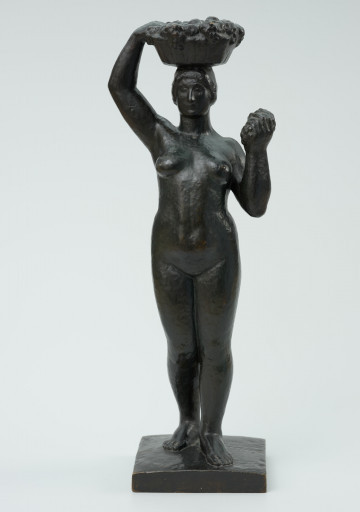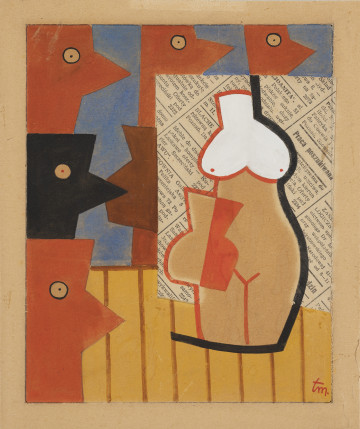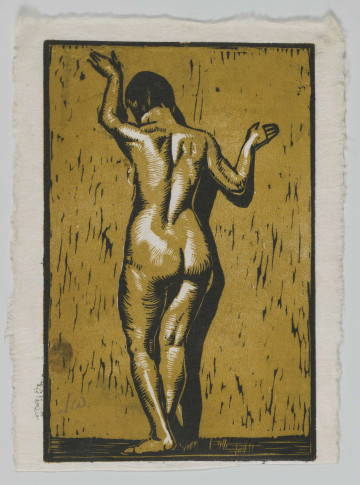
Autumn
1913
National Museum in Szczecin
Part of the collection: European classics of modernity
After graduating from a secondary trade school Edward Wittig worked as an apprentice in a metalworking workshop. In 1897, he passed the entrance exam to the studio of the popular medallist Josef Tautenhayn, a professor at the Vienna Academy of Fine Arts, who immediately admitted the young Pole to the master class. In 1900, he received a scholarship enabling him to go to Paris. At the School of Fine Arts there, he studied with the aged Hubert Ponscarme, and outside the academy he received further training in the workshop of his former pupil Alexandre Charpentier. Influenced by the works of Auguste Rodin, however, Wittig decided to move to the atelier of the great innovator's disciples Madeleine Jouvray and Lucien Schnegg. Initially, two trends clashed in Wittig's work: impressionist and tectonic-classical. The first consisted in extracting the human figure from partially unworked blocks in a non finito convention or in equal, organic modelling of the pedestal and the figure. The latter was characterised by a clear layout based on the contrasts of clearly demarcated solids. This is the structure of the nude Bożyszcze [The Idol] (1906), a bronze cast of which is held in the collection of the National Museum in Szczecin. A naked woman sits hieratically on an architecturally developed mastaboid pedestal-throne. Its austere shape and soft elaboration of the body - an erect torso, arms lowered along the torso and joined knees - is reminiscent of the throning figures of ancient Egyptian art of the New Kingdom period. Wittig was probably inspired by monuments in the style of Amenhotep III (1391-1353 B.C.), depicting Sechmet, namely, the goddess of war, revenge and disease. The Louvre collection, known to the artist, contained numerous monumental, over two-metre-high diorite statues of this type, acquired at the beginning of the 19th century mainly from two sources: the collection of Count Auguste de Forbin and that of Henry Salt. The theme of the destructive powers of women was perfectly in line with the fin-de-siècle fascinations, while the form of the statue corresponded with the wave of Egyptomania following the Empire period.
Szymon Piotr Kubiak
Author / creator
Dimensions
cały obiekt: height: 42 cm, width: 15,5 cm
Object type
sculpture
Creation time / dating
Creation / finding place
Identification number
Location / status

1913
National Museum in Szczecin

1949
National Museum in Szczecin

National Museum in Lublin
DISCOVER this TOPIC
National Museum in Lublin
DISCOVER this PATH
Educational path